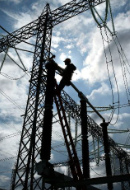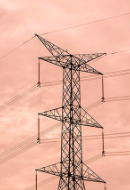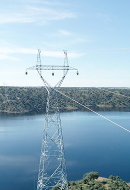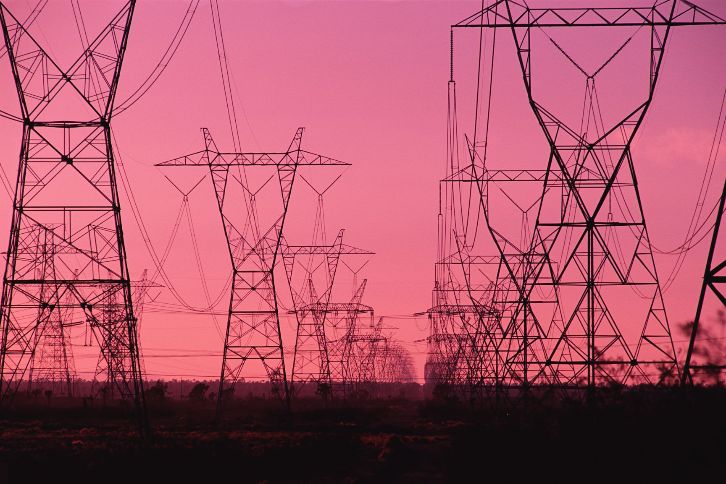Difference between alternating and direct current
Do you know the difference between alternating and direct current?
Electrical network Energy efficiency
Electricity is a fascinating phenomenon that makes our lives much easier and therefore the terms alternating current and direct current are well known, but do we really know the difference between alternating and direct current?
Electricity is a very common concept in our lives and one that we use on a daily basis. It occurs naturally in nature, for example in lightning or in electric fish capable of giving a good shock. And although the effect of static electricity has been known for centuries, it took a long time to study this phenomenon. Some of the pioneers were Galvani, Volta, Coulomb, Ampère, Faraday and Ohm. Many of these names are well known because they ended up naming some of the units that are used today to measure the different magnitudes of this phenomenon.
For the use of electricity, as we use it today, it was essential to know the concept of electric current - the flow of electric charge through a material, normally a conductor - whose charge is measured in coulombs per second, from which we derive its intensity, whose unit is called the ampere. However, in order to understand the concept of electric current correctly, it is necessary to clarify that there are two types: alternating current and direct current. Before talking about the differences between alternating current and direct current, let's clarify what each of them consists of.
What is alternating current?
As its name indicates, alternating current is that in which the voltage regularly changes its polarity (positive or negative) 50 times per second, in the case of European grids, therefore, if we look at the waveform most commonly used in alternating current it shows a sinusoidal shape, which is also the one most efficiently generated by rotating machines such as alternators or generators.
This system was devised by Nikola Tesla and its ease of transformation makes it much more suitable for bringing electricity to industries and homes. The alternating current can be transformed, increasing its voltage by means of transformers to travel much more cheaply and efficiently and then, on approaching the point of consumption, its voltage is reduced again, making it completely safe for industrial or domestic use.
The symbol for alternating current is known worldwide as AC, an acronym for alternating current. As a curiosity, the name of the famous band AC/DC stands for Alternating Current and Direct Current.

Progress on the smart grid
Telecommunications trends and applications in the smart grid.

Electrical substations
Find out what electrical substations are and how they work.

The road to smart grids
A global transition to a green grid powered by renewables.

High, medium and low voltage
Discover their different peculiarities and uses.
¿Qué es la corriente continua?
En contraposición al concepto de corriente alterna, está el de corriente continua en el que la tensión no cambia de polaridad. Es el tipo de corriente que se suele encontrar en las pilas o las baterías, en los que un terminal es siempre positivo y el otro negativo, y cuando se muestra mediante un esquema se ilustra mediante una línea recta y sin variaciones. También hay generadores que producen directamente corriente continua, como los fotovoltaicos.
¿Cuál es la diferencia entre corriente alterna y continua?
Además de las que ya hemos podido ir desgranado, las principales diferencias entre corriente alterna y corriente continua se dan en los siguientes aspectos:
 Polaridad: Como ya se ha mencionado, la corriente continua tiene una única polaridad mientras que la corriente alterna cambia constantemente entre positiva y negativa
Polaridad: Como ya se ha mencionado, la corriente continua tiene una única polaridad mientras que la corriente alterna cambia constantemente entre positiva y negativa
 Energía transportada: Tanto la continua como la alterna se puede transportar a través de líneas. Sin embargo, los equipos necesarios para adaptar la tensión a los distintos usos son mucho más simples y económicos en alterna. Por el contrario, el transporte de electricidad en continua permite un mejor control de los flujos de corriente. Por otro lado, se puede transportar energía dentro de elementos químicos, esto es baterías, pilas, etc., algo que no es posible en el caso de la corriente alterna.
Energía transportada: Tanto la continua como la alterna se puede transportar a través de líneas. Sin embargo, los equipos necesarios para adaptar la tensión a los distintos usos son mucho más simples y económicos en alterna. Por el contrario, el transporte de electricidad en continua permite un mejor control de los flujos de corriente. Por otro lado, se puede transportar energía dentro de elementos químicos, esto es baterías, pilas, etc., algo que no es posible en el caso de la corriente alterna.
 Conexión: Si recordamos cómo funcionan las pilas, tendremos presente que, en la corriente continua, para que haya corriente es imprescindible conectar cada cable con su polaridad correcta. Algo que tampoco sucede en la corriente alterna donde no importa cómo se conectan los dispositivos, por ejemplo, si se giran los enchufes de las viviendas funcionan sin problemas.
Conexión: Si recordamos cómo funcionan las pilas, tendremos presente que, en la corriente continua, para que haya corriente es imprescindible conectar cada cable con su polaridad correcta. Algo que tampoco sucede en la corriente alterna donde no importa cómo se conectan los dispositivos, por ejemplo, si se giran los enchufes de las viviendas funcionan sin problemas.
 Tensión utilizada: Tanto en alterna como en continua el voltaje puede variar, normalmente en función del lugar donde se encuentre. Para el transporte es más eficiente utilizar tensiones elevadas, mientras que para los receptores se utilizan tensiones más reducidas, tanto por seguridad como por coste.
Tensión utilizada: Tanto en alterna como en continua el voltaje puede variar, normalmente en función del lugar donde se encuentre. Para el transporte es más eficiente utilizar tensiones elevadas, mientras que para los receptores se utilizan tensiones más reducidas, tanto por seguridad como por coste.
 Almacenamiento: La energía transportada mediante corriente continua puede almacenarse, como es el caso de las baterías, de forma independiente o asociado a la generación, mientras que esto no puede hacerse con mediante corriente alterna.
Almacenamiento: La energía transportada mediante corriente continua puede almacenarse, como es el caso de las baterías, de forma independiente o asociado a la generación, mientras que esto no puede hacerse con mediante corriente alterna.
The importance of transformers and converters
Because there are these two types of alternating and direct current, of which we have already seen their differences, there is also equipment to modify the type of current, when necessary, usually based on power electronics. In general, they are called converters, although they are often given specific names, such as rectifiers, which only switch from AC to DC, or inverters, which only switch from DC to AC.
To adjust the AC voltage up or down, transformers are used, which are electromechanical elements that are more robust and cheaper than power electronics. The same function is possible between different DC voltage levels, but in this case, it is essential to use converters.
The clearest example is when a power plant produces electricity at a very high voltage in order to allow the current to travel faster over long distances. However, this same current must be down-regulated, using transformers that are close to the final destination (be it homes or industry), to ensure that the voltage that reaches them is adequate for their consumption, which is not the same.
The opposite is the case, for example, when a laptop or smartphone battery charger is connected to the household mains. The mains use alternating current and it is transformed into direct current by the rectifier before it reaches the device.
Photovoltaic generators follow the reverse process, as the panels provide direct current which, to connect it to our home, we transform into alternating current. The equipment that performs this function is a photovoltaic inverter. Finally, if we add battery storage to this installation, we will go from AC to DC and from DC to AC, by means of a converter.





